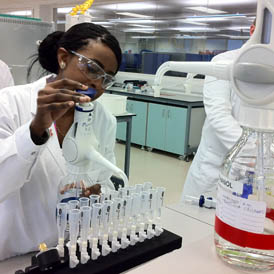London 2012 anti-doping operation biggest ever
Take performance enhancing drugs at the London Olympics, and you will be caught, writes Keme Nzerem, who has been to the opening of a new drugs testing laboratory in east London.

That’s the message the organisers are putting out – in unveiling the most comprehensive testing facility the world of sport has ever known.
Of around 10,000 athletes coming to London, there will be over 6,000 urine and blood tests. Every medallist will be sampled and there will be intelligence-led spot-checks too – but not every athlete. In fact, it works out at less than half. Yes, if you end up on the podium, you’ll have to give a urine sample, but do the risks of cheating now outweigh the benefits?
New technology means the scientists can now benchmark and check for pretty much all known banned substances with a series of standardised tests. The industrial cheating of the kind that produced THG, the designer steroid taken by Dwain Chambers, has been largely eliminated. And going forward, legitimate drug companies are starting to share their research with the testing labs into the kind of new unfinished products that in the wrong hands could be used by unscrupulous athletes.
Prof David Cowan is head of the 2012 sample control centre. For decades the good guys have been chasing the bad guys, he says. But he is adamant that it’s the testers who are now in the fast lane. They now know what to look for. And if it’s there – they’ll find it.